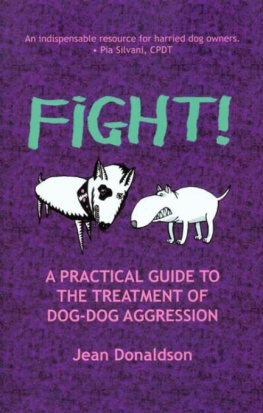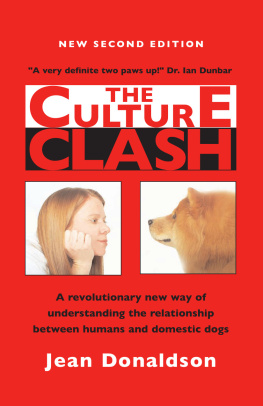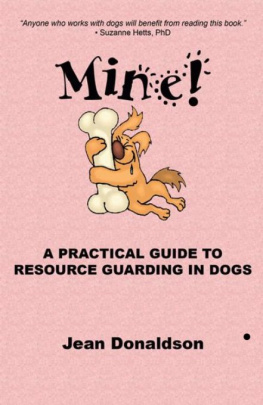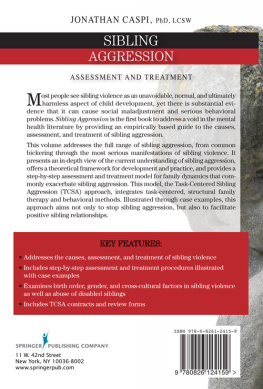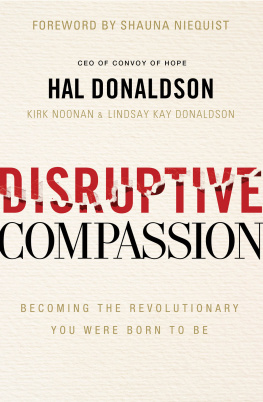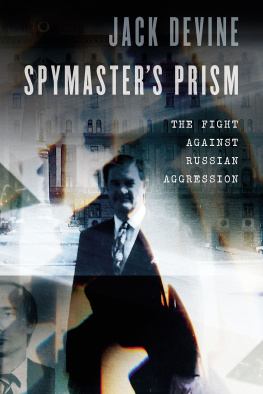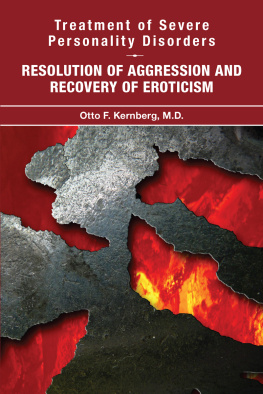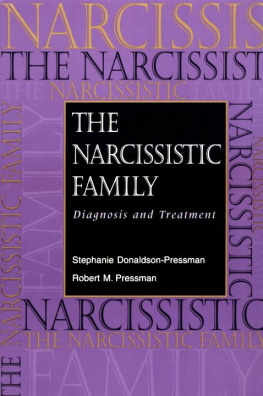Jean Donaldson - Fight!: A Practical Guide to the Treatment of Dog-dog Aggression
Here you can read online Jean Donaldson - Fight!: A Practical Guide to the Treatment of Dog-dog Aggression full text of the book (entire story) in english for free. Download pdf and epub, get meaning, cover and reviews about this ebook. year: 2002, publisher: Direct Book Service, genre: Detective and thriller. Description of the work, (preface) as well as reviews are available. Best literature library LitArk.com created for fans of good reading and offers a wide selection of genres:
Romance novel
Science fiction
Adventure
Detective
Science
History
Home and family
Prose
Art
Politics
Computer
Non-fiction
Religion
Business
Children
Humor
Choose a favorite category and find really read worthwhile books. Enjoy immersion in the world of imagination, feel the emotions of the characters or learn something new for yourself, make an fascinating discovery.
- Book:Fight!: A Practical Guide to the Treatment of Dog-dog Aggression
- Author:
- Publisher:Direct Book Service
- Genre:
- Year:2002
- Rating:3 / 5
- Favourites:Add to favourites
- Your mark:
- 60
- 1
- 2
- 3
- 4
- 5
Fight!: A Practical Guide to the Treatment of Dog-dog Aggression: summary, description and annotation
We offer to read an annotation, description, summary or preface (depends on what the author of the book "Fight!: A Practical Guide to the Treatment of Dog-dog Aggression" wrote himself). If you haven't found the necessary information about the book — write in the comments, we will try to find it.
Fight!: A Practical Guide to the Treatment of Dog-dog Aggression — read online for free the complete book (whole text) full work
Below is the text of the book, divided by pages. System saving the place of the last page read, allows you to conveniently read the book "Fight!: A Practical Guide to the Treatment of Dog-dog Aggression" online for free, without having to search again every time where you left off. Put a bookmark, and you can go to the page where you finished reading at any time.
Font size:
Interval:
Bookmark:
Disclaimer
This book is designed for educational purposes only. The services of a competent professional trainer or applied behaviorist should be sought regarding its applicability with respect to your own dog. The training of dogs is not without risk. The author and publisher shall have neither liability nor responsibility to any person or entity with respect to any loss or damage caused or alleged to be caused directly or indirectly by the information contained in this book.
If you do not wish to be bound by the above, you may return this book to the publisher for a full refund.
2004 Jean Donaldson
All rights reserved
Printed in the United States of America

ISBN 978-0-9705629-6-8
FIGHT!
A Guide to Dog-Dog Aggression

Contents
FIGHT!
A Guide to Dog-Dog Aggression

Introduction
This manual is about dogs who fight with, lunge at and dont get along with other dogs. Its a common problem, cropping up in a variety of contexts.
The first section explores the roots of dog social behavior, the paradigms currently put forward to interpret it and the enormously popular issue of environmental vs. genetic influences on behavior.
The second section describes common presentations of dog-dog aggression and how to tell them apart for treatment purposes. Classification of dog aggression into types is a virtual obsession with many camps within the dog behavior field, with literally scores of diagnostic categories ready for labeling any given case. This manual will present fewer categories, largely based on the principal cocktail of behavior modification techniques used to resolve them.
This emphasis on a classification system based on techniques that have been shown to resolve these problems refers to my behaviorist approach. I am defining behaviorism here as the observation and quantification of what animals do and how this can be influenced by the altering of stimulus-stimulus relationships Pavlovian or Classical Conditioning and response-consequence relationships Skinnerian or Operant conditioning.
Although occasionally there will be some speculation and inference about what might be happening inside the dog emotions, thoughts and motivations I will emphasize what the dog is doing, and then focus on what consequences and associations can be manipulated to get him to do it more or do it less or to do something else altogether. Aggression is behavior like any other behavior, although often with greater emotional load for humans.
The third section begins with prognosis estimates which cases can we reasonably expect to resolve and with what degree of confidence? Then the nuts and bolts of techniques are presented for each type of aggression.
Finally, Ill lay out a standard prevention program for use with puppies and for adults without problems.
To say that aggression is very prevalent in animals is an extreme understatement. Most days of their lives, animals defend themselves from perceived threat, compete over resources, try to obtain lunch and try to avoid becoming lunch. Animals without capacities for normal levels of aggression are summarily purged from the gene pool. Like fear, aggression is good in nature, insofar as it enhances survival and reproduction chances.
The problem with the companion dogs in our lives begins with the presumption that domestication has successfully obliterated all aggression, except pathological exceptions.
While dogs with neurological problems, endocrine imbalances and other bona fide organic abnormalities may behave aggressively as a result, the vast majority of aggression in domestic dogs would be highly adaptive in a natural context. The fact that aggression has not been purged from the domestic dog gene pool could be a result of breeding practices, the inherent difficulty in removing so vital a capacity, or both. Sub-optimal rearing practices, training and husbandry may then conspire to make things worse.
Another important factor to consider is our general failure to make a distinction between aggression that is ritualized and that which is not. In ritualized aggressive encounters, a truthful outcome will be obtained the animal who would have won in a real contest wins but without the very expensive ordeal of flat-out, no-punches-pulled aggression. Ritualization is highly advantageous to both participants, as this cost high injury risk and energy expenditure - is borne by both winners and losers in a real contest.

We humans have a nicely developed understanding of ritualization in our own society. Take boxing, which is basically an aggressive encounter between two men in their prime. There are rules about where and how the combatants can punch, rules about who is considered the winner without having to maim or kill the other, they wear gloves with precise specifications, opponents must be of similar weight, and a referee watches the entire proceedings for rule infractions and to ensure that it is terminated prior to death or maiming injury.
Humans also appreciate the difference between filing a lawsuit and brandishing a machine gun. It is no different with animals: because aggression is so expensive and yet so necessary, all kinds of rituals have evolved. In the case of ritualized dog fights, the combatants will bite with non-maiming force, they will direct most bites at face, head, neck, withers and back, they will make horrific noises and faces, and usually rear up on hind legs. Neither terribly efficient nor effective if the goal was to kill the other dog, although most people witnessing dogfights are so impressed with the noise and visual spectacle that they assume this must be the case.
Indeed, most owners find even the most normal and ritualized levels of aggression distressing to witness. Their goal is to have no aggression of even the most ritualized sort delivered even in normal contexts. This is the equivalent of me requiring you to go through to the end of your life without ever once losing your temper and saying something a bit mean to a loved one, honking your horn at someone who cuts you off in traffic or writing a letter of complaint.
This is not to say that we should just let dogs work it out, and refrain from intervening with behavior modification. The let them work it out piece of advice is a potentially damaging one and is trotted out far too often by well-meaning owners and trainers. There are cases where the use of remedial socialization i.e. carefully selected dogs acting as the primary deliverers of operant contingencies and classical associations can play a key role, and other cases where this should not be employed. There are other times when the option of complete non-intervention exists. But these are useful options for only some types of problems. In other kinds of cases, such approaches would be unhelpful and even detrimental.
Dog training and behavior modification is a field full of camps with different biases. One well-known distinction is that between trainers who use primarily or exclusively techniques that are free of aversives such as pain and startle and those who insist that aversives are necessary and benign. Another less well-publicized difference is whether ones focus is on observable data or on interpretations of what might be going on inside the dogs mind. This is the distinction between the behaviorist viewpoint and traditional dog training. Where a behaviorist is interested in observable and quantifiable behavior, a traditional trainer will offer interpretations about what the dog is thinking, his motives and his presumed status. The other contrasting model to behaviorism is the medical model, which is oriented toward symptom-diagnosis-treatment.
Next pageFont size:
Interval:
Bookmark:
Similar books «Fight!: A Practical Guide to the Treatment of Dog-dog Aggression»
Look at similar books to Fight!: A Practical Guide to the Treatment of Dog-dog Aggression. We have selected literature similar in name and meaning in the hope of providing readers with more options to find new, interesting, not yet read works.
Discussion, reviews of the book Fight!: A Practical Guide to the Treatment of Dog-dog Aggression and just readers' own opinions. Leave your comments, write what you think about the work, its meaning or the main characters. Specify what exactly you liked and what you didn't like, and why you think so.

